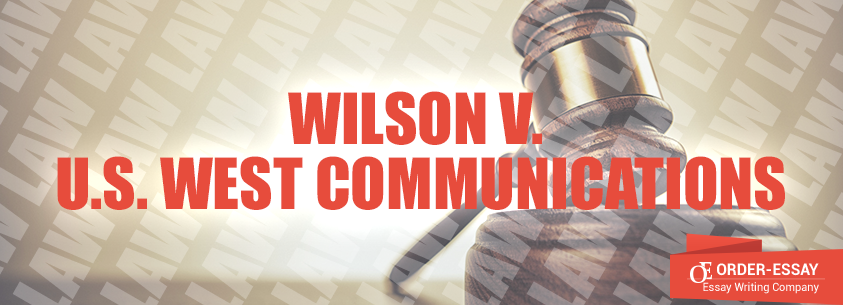
Introduction. In accordance with the First Amendment to the US Constitution, the citizens of the USA are entitled to two fundamental religion-related freedoms. Firstly, they are protected against any official religion by the prohibition of its introduction by the US government. Secondly, every citizen has a right to profess his or her religion. Since the scope of both these rights is rather wide, numerous disputes arise as a result of alleged discrimination based on religion or other faith-related issues. Thus, one should note that the question of religious freedom is still hot-debated. It also applies to practicing religion in a workplace. The primary law in this regard is the Civil Rights Act passed in 1964, which obliges employers to abstain from the discrimination based on race, color of skin, religion, etc. State laws also aim at preventing discrimination while the courts outline the scope of discrimination practices and point out the specific forms it might take in the workplace (cases Raytheon CO vs. Hernandez, Ricci vs. DeStefano). The case under consideration specifically addresses the employer’s duty to accommodate employee’s religious beliefs and the circumstances under which the employer might be exempted from this obligation.
Issue. Is the employer obliged to accommodate the religious beliefs of his/her subordinates?
Ruling. The court held that in case the wearing of the anti-abortion button at work causes significant disruptions among other employees and prevents them from performing their job duties effectively, the employer should not tolerate the clothing style of his subordinate. In other words, the court concluded that the defendant should not have accommodated wearing of the disruptive clothes by his employees.
Facts. The plaintiff C. L. Wilson had been employed by the U.S. West Communications for 22 years starting from 1969 (FindLaw, n.d.). Before Wilson was fired, she occupied the position of information specialist in Omaha, Nebraska. The plaintiff worked together with supervisory personnel and eight other information specialists. Her main duty was to make and keep records with regard to the locations of telephone cables. As the company was experiencing a downsizing in workforce, a lot of employees were transferred to other locations. Wilson together with Ryder and Block were placed in another department where they were not greeted by the staff, which was afraid of future layoffs. Throughout the time, the company had no requirements as to dress code. Information specialists were allowed to wear whatever they considered proper for their occupation. In 1990, Wilson obliged to wear anti-abortion button as a part of her religious practice. Wilson wore the button all the time. She strongly believed that in case she would take off her button for a reason other than sleeping or bathing, she would violate the vow she gave.
In 1990, Wilson started to wear the button at work. One of the information specialists asked her to take off the button at least during her lessons; however, Wilson refused providing the same arguments as before. Later on, this fact led to a great disruption at Wilson’s work as a lot of employees discussed the issue and some of them even threaten the company that they would leave it unless Wilson stopped wearing the button in question. Additionally, it was reported that the productivity rates declined by 40% since Wilson started to wear the button. Wilson still refused to stop wearing it and claimed that the company had no dress code; hence, she has a right to wear anything she likes. Her supervisors offered three options for her. They suggested that she might wear the button while being in cubicle. The second offer provided that the button should be covered while Wilson was expected to work. Finally, they suggested Wilson to wear another button with the same message but without pictures. Wilson refused to accept any of the offers and stated that the removal of the button would mean that she had broken her religious promises.
During another meeting, Wilson was warned that the next time she would wear the button at work, she would be sent home. Wilson filed a lawsuit which she later dismissed as she was allowed to come to work wearing everything she considered an appropriate attire. The case was submitted for investigation and further consideration by the Nebraska Equal Opportunity Commission. Wilson returned to work in 1990, and the disruptions continued. Some employees filed grievances while others accused their supervisors of harassing. Finally, the company ordered Wilson not to appear at work wearing T-shirts with fetuses. At the same time, the three options offered to Wilson earlier were still acceptable to the company. Wilson was returned home when she came to work with the same button. Then, the company fired her for missing three consecutive workdays. Wilson filed a lawsuit against the company claiming that she experienced discrimination on religious basis.
Analysis. Civil Rights Act (1964) is of great importance as it introduced the legal mechanisms of non-discrimination in education, voting, and public accommodation (Bennett-Alexander and Hartman, 2008). The provisions of this Act are closely related to the case in question as they provide for the right of an employee to practice his/her religion in the workplace. The Act specifically obliges an employer to accommodate the employee’s religious observance without undue hardship on the conduct of employer’s business. In the presented case as well as many others where the conflict involves not only an employee and employer but also other co-workers, the court held the decision in favor of the employer. The courts usually recognize that employers are obliged to accommodate the religious beliefs and practices of their employees. However, concerning the dispute arising from religions issues among the employees, the employer has to act reasonably to protect his subordinates from any kind of undue hardships as it is provided by the Civil Rights Act of 1964 (Title VII). Under the latter, the employees have a right to practice their religion in the workplace in the broader meaning of this word. Additionally, the employer is obliged to ensure that the employee is provided with such an opportunity if he or she is in need of practicing their religions while being at work.



In the presented case, it seems that the employer had taken all the appropriate actions to ensure that the employee would have the possibility to worship or follow her religious promises. Specifically, Wilson was offered to wear her button while she worked in the cubicle; additionally, she could wear it under other clothes. Finally, the employer even allowed her to wear the items with the same message but without the pictures on it. Considering all of this, one should state that the employer had actually followed the provisions of the Civil Rights Act (1964) and ensured that one’s right to worship religion in the workplace could be realized.
In regard to this case, there is one more issue is to be examined. Under the Title VII of the mentioned Act, the employer might be obliged to let an employee to expose other employees to his/her religious beliefs (Business, 2009). However, the scope of such exposition is still questionable. In the discussed case, the employee wore a T-shirt with the button; obviously, there was no difference between her wearing the button and a Muslim wearing the clothes inherent for his religion. How can one measure the admissibility of imposing one’s religious views on others through wearing specific clothes? Perhaps, one could suggest the scope of disruption that is caused to other employees as a result of manifestations of one’s religion as a criterion for distinguishing the cases as well as the duties that might be carried by the employers. In the case in question, it is obvious that the employees who surrounded Wilson were emotionally inflicted by her button. The incidents repeated one after another and resulted in low job performance rates. Therefore, considering such circumstances of the case, the actions of the employer seem to be justified by his purpose of eliminating the disruptions in workplace and ensuring that every employee is provided with the opportunity to work under the conditions that endanger neither physical nor emotional health of the employees.
Get a Price Quote
In addition, the religious beliefs of Wilson were not rejected or criticized by the supervisors and company administration. However, the administration was indeed concerned with the forms through which they were expressed. The button included a colored picture of fetus that actually offended the majority of the workers who associated the print with the circumstances unrelated to the issues of abortion or anything similar. It was repeatedly stressed that Wilson’s supervisors as well as co-workers even shared the religious views of Wilson. Considering all of the above-analyzed factors, it should be stated that no discrimination on religious basis occurred in this case. The company’s response to the situation was reasonable bearing in mind the circumstances of the case. The plaintiff was provided with the number of options to choose from through which she could transmit her messages in a less offensive way.
Conclusion. To sum up, it should be noted that the constitutional guarantees of free speech and religious freedom do not always apply to the employers. The latter are undoubtfully obliged to provide all the means that would be necessary for the employees in case they are willing to worship while being at work. No one could be discriminated on religious basis. However, at the same time, the religious freedom of any person is naturally limited by the prohibition of violating the rights of others. In other words, one cannot exercise his/her religious practices if it causes substantial harm to others and makes their life non-endurable. Therefore, the employer should not tolerate the conduct which could be equaled to harassment of employees by another employee based on the religious views of the latter. Therefore, the employer is obliged to guarantee the conditions that do not threaten one’s emotional and physical health.








